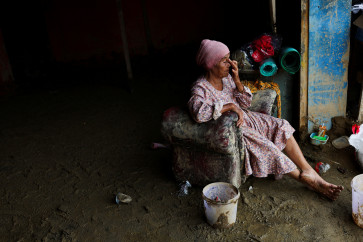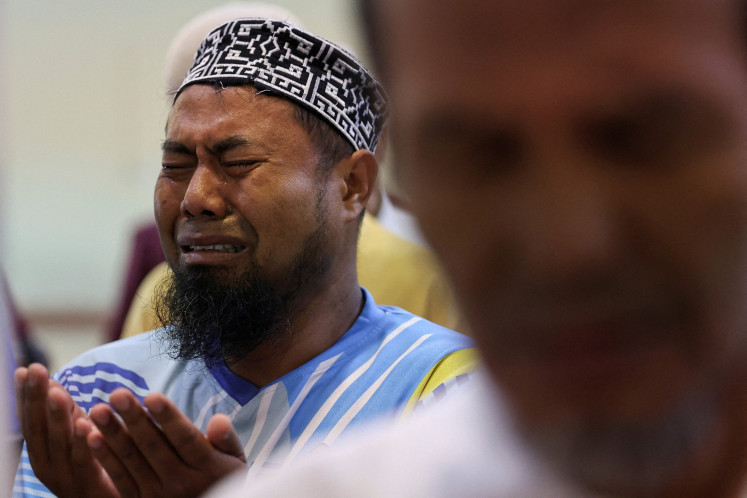Popular Reads
Top Results
Can't find what you're looking for?
View all search resultsPopular Reads
Top Results
Can't find what you're looking for?
View all search resultsVolcanic ash destroying farmland
Mount Sinabung erupted again early on Tuesday, emitting more volcanic ash that has covered and destroyed dozens of hectares of farmland in villages in Karo regency, North Sumatra
Change text size
Gift Premium Articles
to Anyone
M
ount Sinabung erupted again early on Tuesday, emitting more volcanic ash that has covered and destroyed dozens of hectares of farmland in villages in Karo regency, North Sumatra.
'Most of the destroyed farmland is located to the east of the volcano, as the wind carried the ash in that direction,' Karo Agriculture Agency head Agustoni Tarigan told The Jakarta Post on Tuesday.
Tarigan said the ash had blanketed nearby farmland, which had been planted with vegetables, fruits and paddy, at about 4:30 a.m.
'But we don't yet know the degree of damage caused,' he said, adding that agency officials were visiting villages to monitor the impact.
He said affected farmland in the villages of Cinta Rakyat, Ujung Teran, Sukatepu, Naman, and Gangsal was located outside the 3-kilometer danger zone from the mountain's peak.
Tarigan said volcanic ash had destroyed 10,000 hectares of farming land in the regency last year, reducing agricultural production by around 30 percent.
He said the government had distributed assistance worth Rp 1.8 billion (US$150,000) to farmers in the form of seeds, fertilizers and pesticides.
Separately, Sedarita Ginting, an orange farmer, said one third of his farmland had been destroyed by the volcanic ash.
'When the volcano emitted ash, strong winds and rain began. So, our farmland has become little more than mud,' Sedarita said.
Meanwhile, Karo regency spokesman Jhonson Tarigan said the administration was still identifying the affected areas.
Jhonson gave his assurances that the local government would help the farmers by distributing seeds and fertilizers.
Farmers from the Mt. Sinabung area are well-known for the fruit they produce. Their oranges, for instance, are sold nationwide.
Mt. Sinabung first began erupting again on Sunday, after a lull of a few months, emitting thick volcanic ash up to 4, 500 meters into the air and spewing hot clouds.
Some 33,000 residents reportedly panicked and fled their homes. Most of them had only recently returned after living in evacuation shelters for months.
The volcano first erupted in September last year, killing 14 people and displacing thousands of others, many of whom have been in shelters since then, as the mountain has not fully stopped erupting.
President Susilo Bambang Yudhoyono dismissed Karo Regent Kena Ukur Karo Jambi Surbakti in July this year, after the Karo Legislative Council submitted a proposal for his ouster due to poor performance, including his handling of the Mt. Sinabung evacuees.










